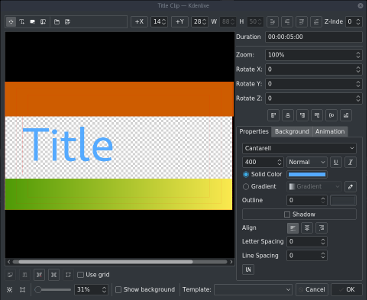
- #How to get movie library into single format linux ffmpeg install#
- #How to get movie library into single format linux ffmpeg update#
- #How to get movie library into single format linux ffmpeg Pc#
- #How to get movie library into single format linux ffmpeg series#
- #How to get movie library into single format linux ffmpeg tv#
Follow these guidelines to save you a lot of grief, depending on the type of content you plan to collect. you can’t put colons in Windows file names), as well as titles in other languages than English. However, some content types can be tricky and tiny punctuation variations can throw the agents off (e.g. Provided you apply the recommended naming conventions ( TV, movies), Plex is usually good at auto-matching and fetching the right metadata, especially since the new movie scanner and agent were introduced with PMS 1.20.
#How to get movie library into single format linux ffmpeg tv#
Matching Recalcitrant Documentaries, TV Shows, Movies, Sports etc.

(I’m not judging, it’s just that I’m not interested nor experienced with this use case).ġ0. I’m using Plex in Direct Play on my LAN and do not care about serving low-quality transcodes to the entire neighborhood as some people seem keen to do. And the more content you add, the more you’ll need it to be organized or the whole thing will collapse under its own weight.Īs a caveat before we move on to the meat of this entry, this post is not about streaming or transcoding. If you’re not willing to make that effort, well, garbage in garbage out, you’ll get out of your libraries what you put into them. But there’s some genre and collection metadata that has to be input via the Plex UI. Instead, metadata is best conveyed via 1) your folder/file organization and naming conventions, 2) by metatagging source files themselves, and/or 3) with helper text/json/xml files to be parsed by Plex agents or scripts. I try to steer away as much as possible from organizing or tagging content via the Plex UI, as that metadata won’t survive if you have to rebuild a library from scratch, which over the years is likely to happen eventually. If you have to take anything from this post, it’s that each type of content needs its own library with an approach that’s finetuned to it.Īs much as I try to use automation and rely on Plex’s native features, to achieve the best results be prepared for some grunt work to get more obscure content organized neatly and in line with how it’s meant to be consumed.
#How to get movie library into single format linux ffmpeg series#
The ways we are interacting with a tutorial, audiobook, movie, or TV series are all very different, and it takes work to bend Plex to be a good fit with all these scenarios. It’s been a long journey and I hope to accelerate your own learning curve.
#How to get movie library into single format linux ffmpeg Pc#
Over the past decade I went back and forth between Plex and Emby as my media server of choice but eventually settled on the former after I switched my server from my desktop PC to an Nvidia Shield, then to a Docker container in a Synology NAS. I have 150TB+ in Plex organized in a dozen different libraries, learned a lot along the way, and will share my notes in this entry.
#How to get movie library into single format linux ffmpeg update#
SSH into your Ubuntu server and update the apt package index.It’s very easy to get started with Plex, but as you add different types of content and grow your libraries, it becomes more and more complicated to keep everything tidy and easy to use.

#How to get movie library into single format linux ffmpeg install#
To install FFmpeg on Ubuntu, follow these steps:ġ. Conveniently, you can install FFmpeg through your distro’s package manager, such as apt in Ubuntu. As such, your computer must have decent hardware capacity.įFmpeg is available in the default repositories of most Linux distributions. Multimedia processing is generally a resource-intensive task. Your computer must have at least 4GB of RAM and a two-core CPU.While the installation method varies, FFmpeg usage should be the same across different operating systems. This tutorial will be using Ubuntu 20.04, Windows 10, and macOS Big Sur for the installation. You’ll need a computer running on a compatible operating system, such as Windows, Linux (RHEL-based, Debian-based, or Ubuntu-based), and macOS.

If you’d like to follow along, be sure you have the following. This tutorial will be a hands-on demonstration.


 0 kommentar(er)
0 kommentar(er)
